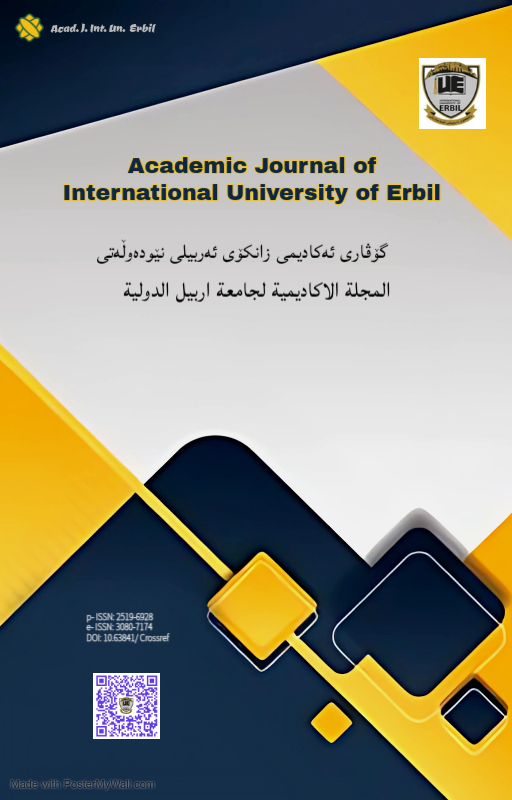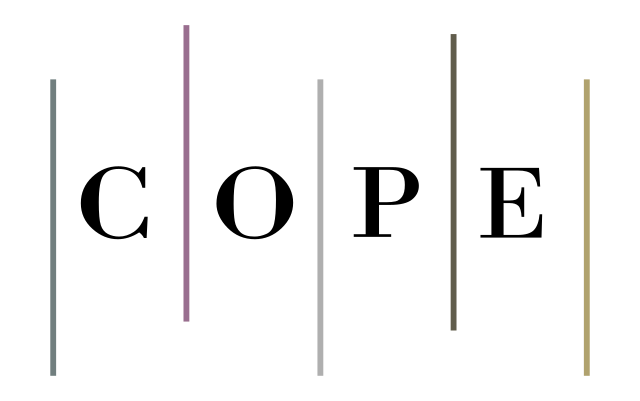Measuring and Analyzing the Interchangeable Relationship between Inflation and Unemployment in Iraq: Phillips Curve
Analyzing the Interchangeable Relationship between Inflation and Unemployment
DOI:
https://doi.org/10.63841/iue22591Keywords:
Inflation rate, Unemployment rate, Phillips Curve, ARDL – ECM.Abstract
Inflation and unemployment are key macroeconomic variables considered by governments and policymakers. The relationship between these two variables is crucial for understanding a country's economic performance, as controlling and reducing both inflation and unemployment are among the primary indicators for the economic stability in the country. The main objective of this article is to identify both short- and long-term Interchangeable Relationship between the inflation rate and unemployment rate in Iraq using the Phillips Curve framework, with an application of the ARDL-ECM model based on secondary data from 2003 to 2023. The study's key finding is an inverse relationship between the unemployment rate and the inflation rate. However, the impact of the unemployment rate on inflation is stronger in both the short and long run than the reverse. In the short term, a one-unit increase in the unemployment rate leads to a decrease in the inflation rate by 3.8369. Conversely, a one percent increase in the inflation rate results in a decrease in the unemployment rate by 0.0017. In the long term, a one-unit increase in the unemployment rate causes the inflation rate to rise by 0.0118, whereas a one percent increase in the inflation rate leads to a decrease in the unemployment rate by 0.0019. To effectively reduce both inflation and unemployment in line with population growth, the government and relevant authorities should implement a strategic plan focused on job creation and investment promotion. Expanding the supply of goods and services can help lower prices and curb inflation, while fostering investment can generate employment opportunities, thereby reducing the unemployment rate.
References
A. Lucy, T. Ali, D. Samuel, “Inflation, unemployment and economic growth: evidence from the var model approach for the economy of Iraq,” International Journal of Developing and Emerging Economies, vol. 5, no. 1, pp. 26-39, 2017.
F. Alper,“Relationship between inflation and unemployment: The ARDL bound testing approach for Turkey,” Uluslararası Ticaret ve Ekonomi Araştırmaları Dergisi, vol. 1, no. 2, pp. 71-80, 2017.
D. Wulandari, S. H. Utomo, B. S. Narmaditya, & M. Kamaludin,“Nexus between inflation and unemployment: Evidence from Indonesia, ” The Journal of Asian Finance, Economics and Business, vol. 6, no. 2, pp. 269-275, 2019.
L. A. Barros, “The relationship between inflation and unemployment in the USA in the surplus approach,” Atlantic Review of Economics (ARoEc), vol. 5, no. 2, pp. 1-25, 2022.
A. Orji, O. I. Anthony-Orji, & J. C. Okafor, “Inflation and unemployment nexus in Nigeria: Another test of the Phillips curve,” Asian Economic and Financial Review, vol. 5, no. 5, pp.766, 2015.
S. Korkmaz, & M. Abdullazade,“The causal relationship between unemployment and inflation in G6 countries,” Advances in Economics and Business, vol. 8, no. 5, pp.303-309, 2020.
S. Syahnur,“Inflation and Unemployment in Southeast Asian Countries: A Panel Gmm Application on Phillips Curve,” Regional Science Inquiry, vol. 12, no. 2, pp. 145-152, 2020.
E. J. Gyang, P. E. Anzaku, & A. D. Iyakwari, “An analysis of the relationship between unemployment, inflation and economic growth in Nigeria: 1986-2015,” Bingham Journal of Economics and Allied Studies, vol. 11, pp. 1-11, 2018.
M. Yelwa, O. O. David, & E. O. Awe,“Analysis of the relationship between inflation, unemployment and economic growth in Nigeria: 1987-2012,” Applied economics and finance, vol. 2, no. 3, pp. 102-109, 2015.
U. Emmanuel, “Inflation and unemployment dynamics in Nigeria: A re-examination of the Philip’s curve theory,” International Journal of Scientific and Research Publications, vol. 9, no. 1, pp. 85-108, 2019.
I. G. Okafor, E. H. Chijindu, & U. S. Ugochukwu, “Responsiveness of unemployment to inflation: Empirical evidence from Nigeria,” International Journal of Scientific Research in Science and Technology, vol. 2, no. 4, pp. 173-179, 2016.
F. Furuoka, “Does the “Phillips curve” really exist? New empirical evidence from Malaysia,” Economics Bulletin, vol. 5, no. 16, pp. 1-14, 2007.
G. Jelilov, O. J. Obasa, & A. Isik,“Impact of inflation and unemployment on economic growth in ten (10) selected member’s states of economic community of West Africa States (ECOWAS)(2001-2014),” Advances in Economics and Business, vol. 4, no. 5, pp. 222-244, 2016.
G. Jelilov, O. Obasa, & A. Isik,“The impact of inflation on unemployment in Nigeria (2001–2013),” Sacha Journal of Policy and Strategic Studies, vol. 6, no. 1, pp. 28-34, 2016.
A. Maximova,“The Relationship between inflation and unemployment: a theoretical discussion about the Philips Curve,”Journal of International Business and Economics, vol. 3, no. 2, 89-97, 2015.
B. Elliot, “The relationship between inflation and unemployment in Ghana: Analysis of the Philips Curve,” African Journal of Economic Review, vol. 3, no. 2, pp. 117-124, 2015
P. A. Kasseh,“The relation between inflation and unemployment in the Gambia: Analysis of the philips curve,” Journal of Global Economics, vol. 6, no. 2, pp. 6-12, 2018.
M. Atgür, “Inflation and unemployment relationship in Turkey: An examination on the validity of Phillips Curve (1988-2017),” International Journal of Eurasia Social Sciences, vol.11, no. 40, pp. 572-605, 2020.
S. U. Daniel, V. C. Israel, C. B. Chidubem, and J. Quansah,“Relationship between inflation and unemployment: Testing Philips curve hypotheses and investigating the causes of inflation and unemployment in Nigeria,” Path of Science, vol. 7, no. 9, pp. 1013-1027, 2021.
R. Maulana, & G. Ganika, “Causal Relationship between Inflation and Unemployment in Indonesia 1986-2018: A Phillips Curve Analysis,” Tirtayasa Ekonomika, vol.17, no. 1, pp. 45-54, 2022.
G. M. Salih, “Measuring the Causal Relationship Between Inflation and Unemployment in Iraq using the Phillips Curve for the Period (2004-2021), ” Tikrit Journal of Administrative and Economic Sciences, vol. 20, no. 66, pp. 317-336, 2023.
K. Juselius, “Recent developments in cointegration,” Econometrics, vol. 6, no. 1, pp. 1. 2017.
H. U. Rehman, & M. Afzal, “The J curve phenomenon: An evidence from Pakistan,” Pakistan Economic and Social Review, vol. 12, no. 1 & 2, pp. 45-58, 2003.
S. Hussain, M. Sun, T. Mahmood, M. Riaz, & M. Abid, “IQR CUSUM charts: An efficient approach for monitoring variations in aquatic toxicity, ” Journal of Chemometrics, vol. 35, no. 5, pp. e3336. 2021.
J. A. Armstrong, “Should we redesign forecasting competitions?,” International Journal of Forecasting, vol. 17, pp. 542-545, 2001.
Downloads
Published
Issue
Section
License
Copyright (c) 2025 Academic Journal of International University of Erbil

This work is licensed under a Creative Commons Attribution 4.0 International License.












